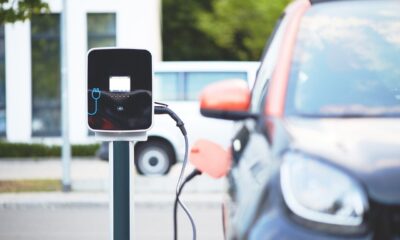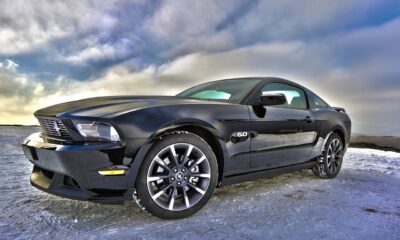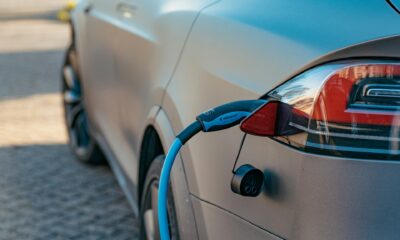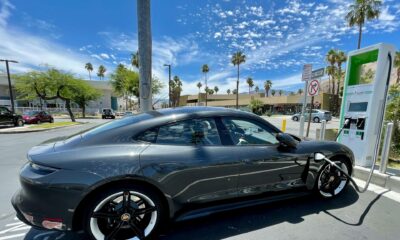Impact Investing
Italy’s Electric Cars Market Rebounds, but 2030 Targets Remain Elusive
In 2024, electric vehicle (EV) sales declined in Europe and Italy, but 2025 shows strong recovery: +21.9% in Europe and +63.3% in Italy from January to May. Despite improvements in infrastructure, offerings, and user satisfaction, Italy still lags behind targets. Reaching 2030 goals requires stable incentives, structural reforms, and greater public awareness.
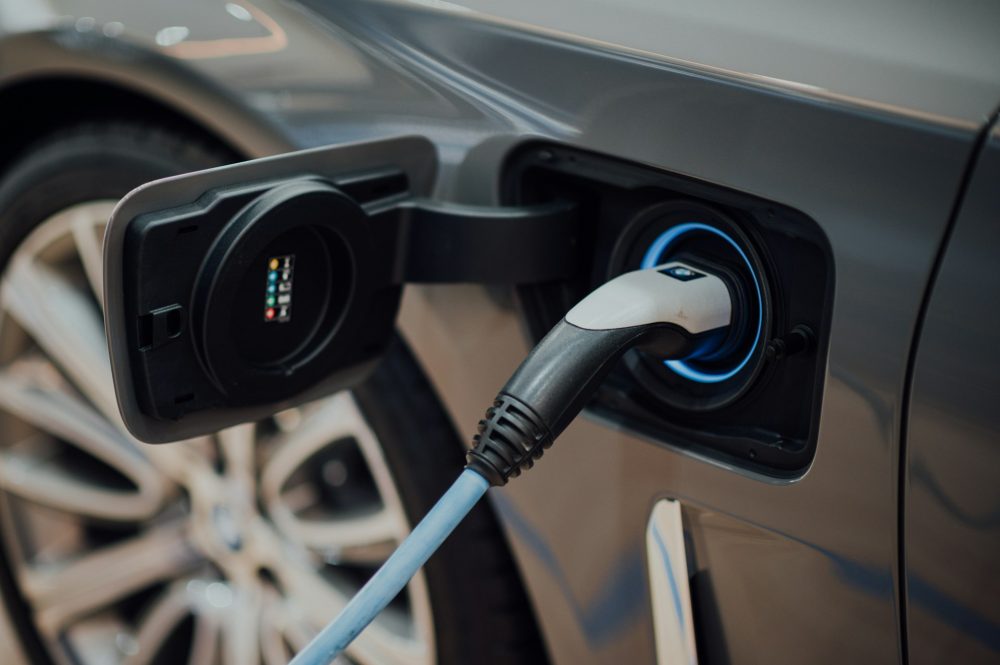
In 2024, the automotive market saw contrasting trends in Europe and Italy, with overall European registrations growing (+1%, equal to 13 million cars) and a decline of -1% in Italy (1.58 million). Conversely, electric cars registrations declined both in Europe (-2.1%, 3 million vehicles) and in Italy (-13.3%, only 119,000).
The situation changed in 2025: from January to May, monthly “green” registrations in Europe grew by an average of 21.9%, and in Italy by a whopping 63.3%, even better than in 2023, peaking at +92% in April. These are some of the findings from the Smart Mobility Report 2025 , prepared by the Energy & Strategy department of the School of Management of the Polytechnic University of Milan .
“The data recorded in the first months of 2025 point to a promising direction. To accelerate this trend, a comprehensive and integrated approach is needed, combining structural and regulatory interventions,” commented Paolo Maccarrone , Scientific Director of the Report.
“We have gathered several suggestions from operators that go precisely in this direction: from the creation of a steering committee with a select panel of decision-makers to incorporate proposals from all active stakeholders, in order to reduce implementation times, to the development of multi-year incentive plans and stable support mechanisms to support the supply chain and provide clarity to potential buyers, to the simplification of bureaucratic procedures. And let’s not forget information: promoting greater awareness of the economic and environmental benefits of electric mobility is essential to overcome the cultural resistance that remains widespread and stimulate demand.”
These figures could represent a turning point for our country, stemming not only from commercial dynamics but also from several other factors, including a more competitive and high-performance offering, greater buyer awareness, and the progressive improvement of the charging network. However, the 2030 targets remain distant: to meet them, approximately 1 million electric cars would need to be registered annually.
At the current rate, according to scenario forecasts, by the end of the decade there will be just 3.1 million electric cars on the road, compared to the 6.6 million set by the Italian National Plan (PNIEC).
The automotive sector in the world
In 2024, global automobile production, regardless of fuel type, stood at 75.5 million units, down 0.5% from 75.9 million in 2023. Bucking the trend, China grew by 5.2%, with 26.8 million vehicles produced, reaching a market share of 35.4%. In terms of trade flows, the value of Chinese cars imported into Europe rose from 2% in 2019 to 21% in 2024, while European exports to China fell from 25% in 2021 to 13% in 2024. The United States remains the main export market for Europe, although this position is currently threatened by the possible introduction of new tariffs.
Globally, 17.3 million electric cars were produced , a 25% increase compared to 2023, driven primarily by China, which alone produced 12.4 million, or 70% of the global total. The European Union remained the second largest production hub with 2.4 million units.
European manufacturers accounted for nearly 80% of regional production, but with widely varying performances: German manufacturers increased by 5%, while groups like Stellantis and Renault decreased by 15%. Furthermore, US OEM production in Europe increased sixfold compared to 2023 (now accounting for 20% of the total), driven primarily by Tesla and Ford, increasing industrial dependence on the US.
In terms of sales, approximately 75 million cars were registered worldwide in 2024 , with China remaining the only market to have surpassed pre-pandemic levels (23 million registrations, a 9.5% increase compared to 2019). The diffusion of electric vehicles in China is also continuing apace: from 38% to 48%, or about 10 percentage points more per year since 2020.
Electric cars registered in Europe
In 2024, electric cars registered in Europe accounted for 22.7% of the total , 0.7% less than in 2023. In absolute terms, this represents approximately 3 million vehicles (2 million fully electric), a 2.1% decrease compared to the previous year: a sign of a slowdown in the market likely influenced by economic factors and the uncertainty of the technological transition.
The decline was clearly evident in the second quarter: after a positive start (+7.2% compared to the same period in 2023), the trend reversed sharply (-13.5%), while in the third quarter, values returned to the previous year. Nonetheless, 2025 began with encouraging signs : in fact, average monthly growth, compared to the same month of the previous year, settled at a 21.9% increase from January to May.
Electric cars registerd in Italy
In 2024, approximately 119,000 electric cars were registered in Italy , a 13.3% decrease from 2023, more than half (55.6%) of which were fully electric. The share of electric vehicles in total registrations stood at 7.5%, a 1.1% decrease from the previous year, the lowest percentage among the main European automotive markets, confirming Italy’s structural lag in the transition to electric mobility.
However, even in Italy, the first 5 months of 2025 showed a significant trend reversal compared not only to 2024, but also to 2023: from January to May in 2025, approximately 73,000 cars were registered, compared to 45,000 the previous year (+63.3% on a monthly basis) and 58,000 in 2023. The result for April is particularly significant: +92%.
The survey: satisfied drivers and encouraging signs
To measure the level of satisfaction and user experiences, a survey was conducted in the first quarter of 2025, in collaboration with BVA Doxa , aimed primarily at owners and users of electric vehicles, who proved to be extremely satisfied: as many as 84% of those who use fully electric vehicles would purchase them again in the future, also due to the positive perception of real range compared to the declared one (71% report a maximum deviation of 10%), which dispels one of the most common concerns, “range anxiety.”
Looking at charging methods for fully electric vehicles, 48% of users say they don’t use public access points due to high costs, 22% due to limited coverage, times incompatible with daily needs, and difficulty of use. A staggering 37% of respondents say they charge exclusively at home, thanks in part to the fact that over half of the sample has adequate private infrastructure, such as a wallbox or a private or shared charging station.
The primary motivation for purchasing (30% of respondents) remains the positive environmental impact , followed by the ability to use self-generated energy and the cost-effectiveness of home charging. Approximately a quarter of respondents attributed a significant role to incentives (free access to restricted traffic zones, free parking, etc.).
As for incentives, just over half of the sample (54%) took advantage of them for their purchase, with a clear predominance of the Ecobonus (85%) followed by regional incentives (21%). Among those who did not take advantage of them, almost half (46%) still chose to purchase the vehicle without incentives, a sign that confirms the growing appeal of fully electric vehicles.
A positive picture also emerges from the results of the Total Cost of Ownership analysis , conducted on the same sample as the previous survey: even in the absence of purchase incentives, BEVs can already be more cost-effective than traditional vehicles under certain conditions of use. The factors that most impact the final result are the car’s initial cost, the possibility of low-cost charging, and annual mileage.
The ever-increasing and competitive offer of electric cars
In Italy, the offering of electric cars continues to grow and become progressively more competitive : 115 basic models will be available in the first half of 2025, a 12% increase compared to the same period in 2024. Quality is also improving, with increasing average performance (range and charging times) while prices remain largely stable.
The imminent launch of new, lower-cost BEV models, announced by several manufacturers, is a further positive sign for market development: by the end of next year, segment B vehicles priced under €30,000 and segment A vehicles priced under €20,000 are expected to arrive, making electric vehicles an increasingly accessible choice. For this very reason, improving the economic and functional accessibility of public infrastructure is desirable, including by increasing the presence of ” fast ” and ” ultra-fast ” points in strategic areas such as extra-urban roads and motorways.
Publicly accessible charging infrastructure continues to grow in Europe: one million charging points will be available by the end of 2024, approximately 18% of which will be fast. Compared to 2023, slow charging points, typically used in urban or residential settings, have increased by 35%, while fast charging points have seen even more significant growth, at 43%. These data highlight not only intensifying investment in infrastructure but also a growing focus on fast charging solutions , which are essential for encouraging the widespread adoption of electric vehicles.
In terms of density relative to population, the European picture at the end of 2024 was still quite heterogeneous , with marked differences between countries and limited variations compared to the past. The Netherlands remains clearly in first place, with a density of approximately one charging point per 100 inhabitants, followed by Belgium, Denmark, Norway, and Sweden.
Similar trends are also affecting Italy: 66,000 public charging points will be available at the end of 2024, a 34% increase over 2023, data that highlights the growing commitment to filling the country’s infrastructure gap. While 78% of these charging points still fall into the “slow” category (+27% over 2023), “fast” points have seen a significant increase of 67%.
Regarding the development of private-access infrastructure, Italy had an estimated 560,000 active charging points at the end of 2024 , a 12% increase compared to 2023: a more modest increase than in the past. Indeed, one of the main factors supporting the expansion of private infrastructure in past years was the Superbonus, which incentivized the installation of residential charging stations in conjunction with other energy efficiency measures. Over the past two years, the progressive reduction in the incentive’s value has caused a gradual slowdown, confirming that the development of private infrastructure, while essential for encouraging widespread, daily charging, is still heavily dependent on fiscal and regulatory incentives.
Sustainable mobility development scenarios in Italy
To analyze future prospects for 2030, three possible scenarios have been defined: Business As Usual (BAU), in line with current market trends; Boosted ( BOS), more optimistic, which envisages further ad-hoc legislative support for the spread of sustainable mobility; and Policy Driven (PD), with very strong development forecasts, which presupposes the achievement of the targets set by the PNIEC (6.6 million electric cars on the road in Italy by 2030) and presupposes strong support for smart mobility , from aid to the supply chain to incentives for end users.
In all three scenarios, the circulating fleet of traditional cars would remain predominant , with a minimum of 29.4 million units (PD scenario, 73% of the total) and a maximum of 32.9 million units (BAU scenario, 82%). Conversely, electric cars would range from 3.1 million in the BAU scenario (8%) to 6.6 million in the PD scenario (16%). The regulatory targets for 2030 appear increasingly challenging year after year. In fact, to achieve them, it would be necessary to register an average of approximately 1 million electric cars per year between 2025 and 2030.
__
(Featured image by CHUTTERSNAP via Unsplash)
DISCLAIMER: This article was written by a third party contributor and does not reflect the opinion of Born2Invest, its management, staff or its associates. Please review our disclaimer for more information.
This article may include forward-looking statements. These forward-looking statements generally are identified by the words “believe,” “project,” “estimate,” “become,” “plan,” “will,” and similar expressions. These forward-looking statements involve known and unknown risks as well as uncertainties, including those discussed in the following cautionary statements and elsewhere in this article and on this site. Although the Company may believe that its expectations are based on reasonable assumptions, the actual results that the Company may achieve may differ materially from any forward-looking statements, which reflect the opinions of the management of the Company only as of the date hereof. Additionally, please make sure to read these important disclosures.
First published in ESG NEWS. A third-party contributor translated and adapted the article from the original. In case of discrepancy, the original will prevail.
Although we made reasonable efforts to provide accurate translations, some parts may be incorrect. Born2Invest assumes no responsibility for errors, omissions or ambiguities in the translations provided on this website. Any person or entity relying on translated content does so at their own risk. Born2Invest is not responsible for losses caused by such reliance on the accuracy or reliability of translated information. If you wish to report an error or inaccuracy in the translation, we encourage you to contact us.

-

 Fintech1 week ago
Fintech1 week agoN26 Hires UBS Executive to Lead Turnaround Amid Regulatory Pressure
-

 Crowdfunding2 weeks ago
Crowdfunding2 weeks agoDigital Finance Fosters Inclusivity: Women and Minorities Lead in Italian Equity Crowdfunding
-

 Biotech3 days ago
Biotech3 days agoCAR-T Therapies: From Breakthrough Cancer Treatment to Faster, Safer, and More Accessible Immunotherapy
-

 Cannabis1 week ago
Cannabis1 week agoLuxembourg’s Cannabis Paradox: Legal at Home, Restricted Everywhere Else




